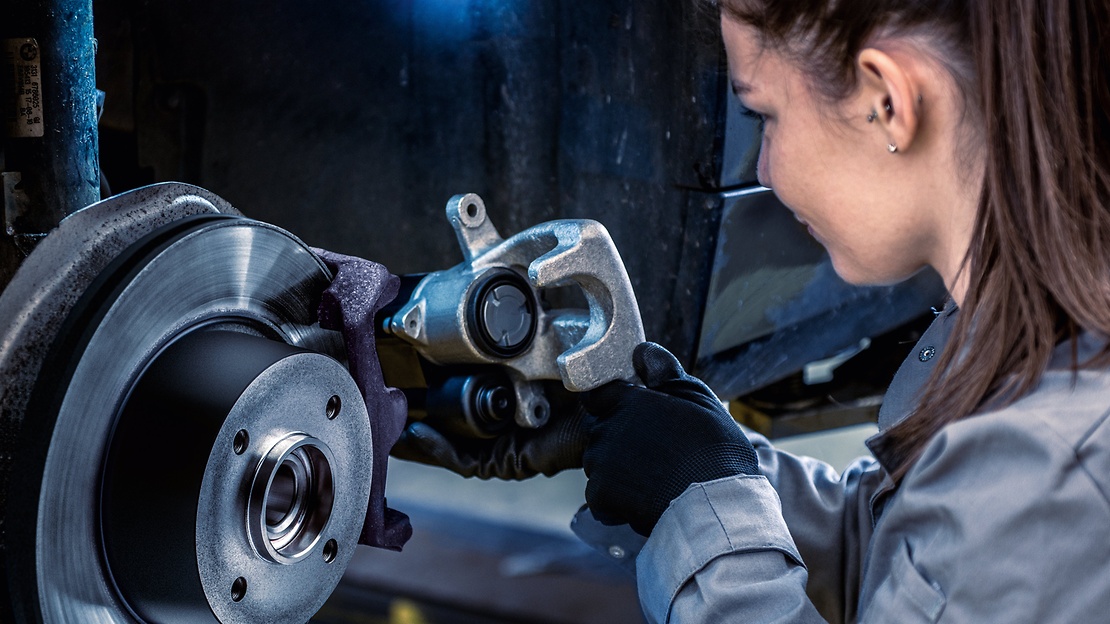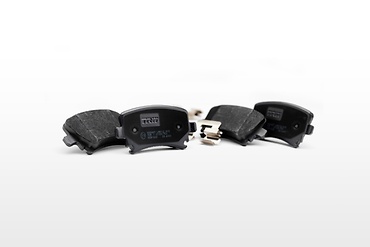This how to guide shows and describes how to change the caliper when a car is fitted with TRW electric park brake (EPB).
How-to-guide
To correctly and safely change the caliper on a vehicle equipped with TRW electric park brake (EPB), a diagnostic service tool must be used. Before any mechanical work is undertaken and the vehicle is put on the lift, use the diagnostic service tool to release the rear calipers and put the system in pad change mode.
Using your diagnostic service tool, select the correct vehicle make and model and select the EPB function. Within the EPB function, select the maintenance function and then the replace pads function. Follow the instructions on your diagnostic service tool and release the brake system. This retracts the pressure nut from within the piston to its end stop on the spindle. The system is now safe to work on.
The vehicle can now be placed on the lift, lifted and the wheels removed. Dismantle the caliper in the normal manner by first removing the brake hose connection. Remove the caliper housing from the carrier. Disconnect the electrical connection from the motor and with the caliper on the bench, remove the fixed brake pipe from the caliper housing.
If it is necessary to replace the brake pads and / or discs, proceed in the normal manner.
Remove the brake pads from the old carrier. Check the operation of the guide pins making sure they move freely and have no radial freeplay. Check the condition of the disc. If it is necessary to change the disc, remove the carrier from its mountings and remove the disc from the hub.
Clean the face of the hub and clean the area of the wheel speed sensor and encoder ring before fitting a new disc. Do not apply grease between the disc and hub mounting surfaces as this can lead to problems with run-out.
Reattach the carrier ensuring it is correctly torqued to the manufacturers’ recommendations. Clean the carrier where the spring clips are to be seated and replace with new spring clips. Fit the brake pads in. Do not apply any grease at all. Grease attracts brake dust and general dirt which in turn forms a grinding paste which leads to problems further down the line.
Now proceed to fit the new caliper housing securing it to the carrier and torquing the nuts to the correct specifications as advised by the vehicle manufacturer. Note: Replacement rear calipers come pre-filled with brake fluid. To prevent leakage the inlet port is secured with a grub screw. This must be removed before attempting to re-fit the brake pipe. Re-fit the fixed brake pipe to the housing as shown and reattach the brake hose. Reconnect the electrical connector to the motor and bleed the brake system in accordance with the manufacturer’s instructions.
With your diagnostic service tool, select the ‘close brakes’ operation and close the brake system up. Once this is completed, you must now calibrate the brake system using your diagnostic service tool. This will reset the internal pad wear indication of the system.
Once the calibration sequence is complete, use your diagnostic service tool to check for any fault codes. If all work has been carried out correctly, no fault codes will be present.
Using the grub screw removed from the new caliper, insert this into the inlet port on the old caliper. Attach the core return label supplied with the new caliper and put the old caliper into the box from which the new caliper was taken. Return to your distributor to receive your core rebate.
Nice-to-know

ZF Aftermarket product range
Discover the complete portfolio of brakes in our product catalog.


